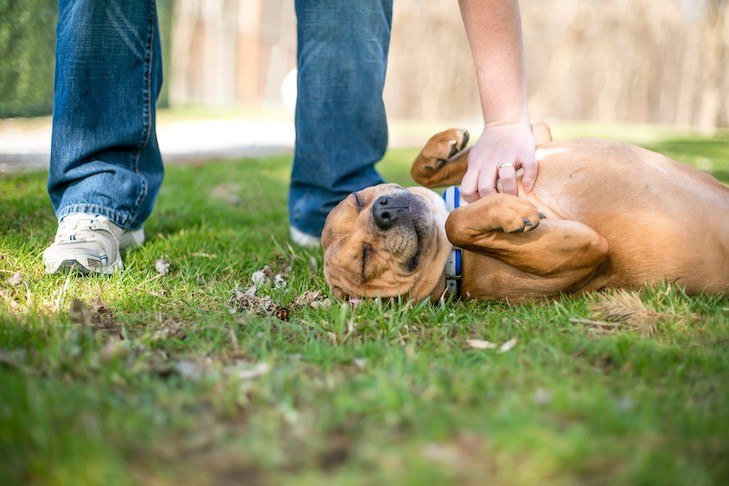Dogs frequently roll onto their backs, a behavior that often sparks curiosity and amusement in their human companions. While it might seem like a simple request for a belly rub, the reasons behind this action are far more complex and fascinating. Understanding why dogs exhibit this behavior can provide valuable insights into their communication, emotional state, and overall well-being.
Reasons Behind the Back Roll
Several factors contribute to a dog’s decision to roll onto their back. This seemingly simple act can convey a range of messages, from playful invitation to signs of submission or even discomfort.
The Belly Rub Plea
One common reason, and perhaps the most widely assumed, is the desire for a belly rub. Many dogs relish the sensation of having their bellies scratched, and rolling onto their backs presents a clear invitation for this attention. However, it’s crucial to observe accompanying body language. A relaxed, open mouth, loosely wagging tail, and soft eyes suggest genuine enjoyment. If the dog appears tense, stiff, or avoids eye contact, the back roll may signify something else entirely.
Playful Invitation and Tactical Maneuvering
Rolling onto their back can also signal a desire to play, especially when interacting with other dogs or puppies. This posture can be an invitation to engage in playful wrestling or a strategic move during a play session. By exposing their vulnerable belly, the dog may be initiating a game of chase or attempting to gain a tactical advantage. Research indicates that dogs may use this position to launch playful attacks or evade being bitten.
Communicating Non-Aggression and Appeasement
In some situations, a dog may roll onto their back as a way of displaying submission or appeasement. This behavior often occurs when meeting new dogs or people, or when being scolded by their owner. By exposing their vulnerable underbelly, they communicate a lack of threat and a desire to avoid conflict. This submissive posture can be accompanied by a tucked tail, averted gaze, and even urination.
Fear, Anxiety, and Stress
Conversely, a back roll can also indicate fear, anxiety, or stress. A dog exhibiting this behavior in a tense or fearful manner might be trying to de-escalate a perceived threat. Look for signs of distress such as trembling, whining, tucked tail, and flattened ears. If a dog rolls onto their back in a fearful situation, it’s essential to remove them from the stressful environment and address the underlying cause of their anxiety.
Itch Relief and Temperature Regulation
More practical reasons for back rolling include scratching an itch or cooling down. Dogs may rub their backs on the ground to alleviate itching caused by allergies, parasites, or dry skin. Similarly, on hot days, exposing their less furry belly to the cool ground can help regulate their body temperature.
The Allure of the Stink
Finally, and perhaps most baffling to humans, dogs often roll on their backs to cover themselves in strong, unpleasant odors. This behavior, thought to be a vestige of their wild ancestry, could be a way of masking their own scent while hunting or communicating with other dogs.
Deciphering the Back Roll Message
Understanding the context and accompanying body language is crucial to interpreting why a dog is rolling on its back. Observe the dog’s overall posture, facial expressions, tail wags, and vocalizations to determine the underlying emotion and intent. A relaxed and playful dog will exhibit loose movements, a wagging tail, and an open mouth. A fearful or anxious dog will display tense muscles, a tucked tail, and potentially whining or whimpering.
By paying close attention to these cues, we can gain a deeper understanding of our canine companions and respond to their needs appropriately. Whether it’s a playful invitation, a plea for affection, or a sign of distress, the back roll offers a window into the complex world of canine communication.
